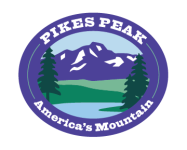COLORADO SPRINGS, Colo. – On Earth Day 2021, Pikes Peak – America’s Mountain (PPAM) has launched a multipart video series called, “Our Road to Sustainability,” focused on the sustainable aspects of the new Pikes Peak Summit Complex. The building, set to open this summer, was designed to achieve LEED Silver certification, a globally recognized symbol of sustainability achievement. It also strives to achieve the Living Building Challengesm (LBC), which is a two-year certification process for highly sustainable, zero-energy buildings. Currently, no other buildings in the state of Colorado are fully LBC certified.
“Pikes Peak is a National Historic Landmark, and as stewards of the summit’s built environment, it’s critically important for us to think about how the new Summit Complex will affect the environment not only today, but 50 years from now,” said Jack Glavan, Pikes Peak – America’s Mountain manager. “Every aspect of the new building has been carefully and thoroughly reviewed with sustainability at the forefront of the entire project.”
The first video, an introduction to the educational series, is now available to view on the Pikes Peak YouTube channel. The rest of the series will be gradually released on YouTube in the run-up to the grand opening of the Summit Visitor Center early this summer. The series includes commentary from USDA Forest Service representatives; PPAM project managers; architects from RTA Architects of Colorado Springs, who partnered with GWWO Architects on the building’s design; project leaders from GE Johnson, the local project contractor; Colorado Springs Mayor John Suthers; and other stakeholders.
Throughout the eight-part series, viewers will learn about the seven performance areas, or petals, of LBC and how the Summit Complex incorporates these elements into its design and operation. The petals, which represent the efficiency of a flower – the symbol of an ideal built environment – stand for place, water, energy, health and happiness, materials, equity and beauty. LBC is operated by the International Living Future Institute, a global nonprofit organization.
To meet the challenge, the Summit Complex must be regenerative in nature. This means it must be self-sufficient and remain within the resource limits of its site; connect occupants to light, air, nature, community and food; and create a positive impact on the human and natural systems that interact with it.

